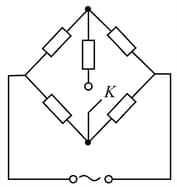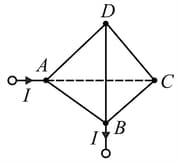Two balls of charge and initially have a velocity of the same magnitude and direction. After a uniform electric field has been applied during a certain time, the direction of the velocity of the first ball changes by , and the velocity magnitude is reduced by half. The direction of the velocity of the second ball changes thereby by .
In what proportion will the velocity of the second ball change? Determine the magnitude of the charge-to-mass ratio for the second ball if it is equal to for the first ball. The electrostatic interaction between the balls should be neglected.

Important Questions on Electricity and Magnetism
Why do electrons and not ions cause collision ionization of atoms, although both charges acquire the same kinetic energy ( is the charge of the particles, and is the potential difference) in an accelerating field? Assume that an atom to be ionized and a particle impinging on it have approximately the same velocity after the collision.
Two small identical balls lying on a horizontal plane are connected by a weightless spring. One ball is fixed at point, and the other is free. The balls are charged identically, as a result of which the spring length increases twofold. Determine the change in the frequency of harmonic vibrations of the system.
A hank of uninsulated wire consisting of seven and a half turns is stretched between two nails hammered into a board to which the ends of the wire are fixed. The resistance of the circuit between the nails is determined with the help of electrical measuring instruments. Determine the proportion in which the resistance will change if the wire is unwound so that the ends remain to be fixed to the nails.
Five identical resistors (coils for hot plates) are connected as shown in the diagram in

What will be the change in the voltage across the right upper spiral upon closing the key ?
What will be the change in the resistance of a circuit consisting of five identical conductors if two similar conductors are added as shown by the dashed line in?

Indicate the edge of the frame that should be eliminated to obtain the maximum,

change in the current in the circuit, neglecting the resistance of the leads.
